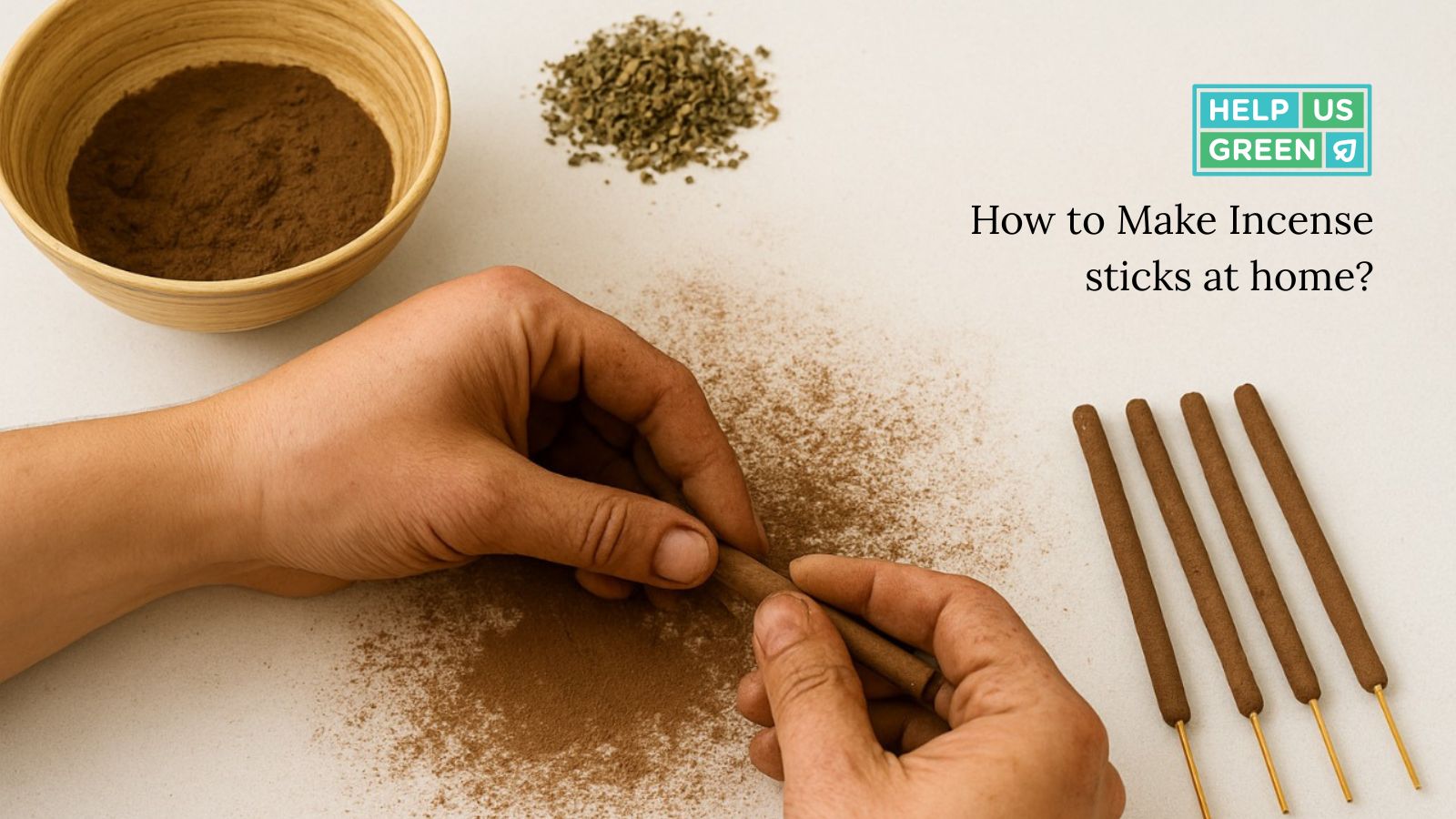There’s something about making things by hand that shifts your pace. Slows your thoughts down a little. That’s what happens when you start making your own incense.
You don’t need a perfect setup or a craft kit. Just a handful of natural ingredients, a little space to dry them, and a reason. Maybe you want something clean in the air. Maybe you’re curious. Either way, learning how to make incense is easier than it sounds, and more calming than you’d expect.
You’ll Only Need a Few Things
Before you start, gather what you have. No need to buy everything new.
-
Plain bamboo sticks (unscented ones work best)
-
Dried herbs or flowers - rose, tulsi, sandalwood, lavender, even orange peel
-
A binder like makko powder or gum tragacanth
-
A little water
-
Mortar and pestle or spice grinder
-
Essential oils (optional, just a few drops if you like)
If you're not quite ready to make your own yet, you might enjoy browsing HelpUsGreen’s agarbatti collection. They’re made from temple flowers - clean, intentional, and beautifully crafted.
How to Make Incense Sticks at Home, Step by Step
Let this be slow. You're not rushing to meet a deadline. You're building scent, memory, and maybe a bit of silence into your space.
1. Grind Your Ingredients
Take your dried herbs or petals and grind them to a fine powder. The smoother your mix, the better your incense will stick and burn evenly.
2. Make Your Paste
Add your binder, about one part binder to four parts powder, and slowly add water. Mix until you get a thick, moldable paste. If you want a stronger scent, now’s the time to add a few drops of essential oil.
This is where you begin to feel what it means to make something by hand. It’s not about instructions. It’s about how the mixture feels between your fingers. That’s the real beginning of how to make your own incense sticks.
3. Roll It On
Take a bamboo stick and gently roll the paste onto it. Use your fingers to shape and smooth it as best as you can. Don’t worry if it’s not even. Leave the bottom inch bare so it’s easy to hold and light later.
4. Let Them Dry
Lay your sticks flat somewhere dry and airy. Avoid direct sunlight. Let them sit for 3 to 5 days. They should feel dry to the touch and hold their shape.
This is the quiet part of how to make incense sticks at home, where time does the rest of the work.
Why Bother Making Your Own?
Because you know exactly what’s going into the air you breathe. No synthetic fragrances. No fillers. Just the scents you chose, in the proportions you decided, made by hand not a machine.
Once you learn how to make natural incense, it’s hard to go back to mass-produced sticks. The smoke smells softer. The burn feels slower. It doesn’t just change the air. It changes the way the room feels.
If you’re looking for something rich, slow-burning, and already made with intention, explore HelpUsGreen’s luxury dhoop sticks. They're full-bodied, grounding, and deeply aromatic.
This Can Be a Quiet Habit
The beauty of learning how to make homemade incense sticks is that you can do it again and again. Try rose one week, tulsi and cinnamon the next. Maybe dry petals from a garland you kept. Maybe herbs from your kitchen window.
You don’t have to light one every day. But when you do, it’s something you made and that makes it feel different.
FAQs
1. Can I use fresh flowers instead of dried ones?
No, always dry your petals or herbs completely before grinding. Fresh ones hold too much moisture and won’t burn well.
2. What if I don’t have makko powder?
Gum tragacanth works too. The binder is essential for shaping the stick and ensuring it burns evenly.
3. How do I know when the incense is dry?
Touch it. It should be firm and dry all the way through. Usually 3–5 days is enough in a dry room.
4. Can I make incense without bamboo sticks?
Yes. You can shape the paste into cones or little coils. They burn slower and don’t need a stick at all.
5. Can I use petals from temple offerings or garlands?
Absolutely. Just dry them out first. They carry meaning and scent, which makes them perfect for incense.
Once you’ve tried this once, you might start thinking differently about the scents around you. You’ll notice what calms you, what clears the air, what makes a moment feel fuller. And every time you light a stick, it’ll remind you that you made it slowly, carefully, with your own two hands.
That’s the real heart of how to make incense. You’re not just creating a scent. You’re making space for it.




